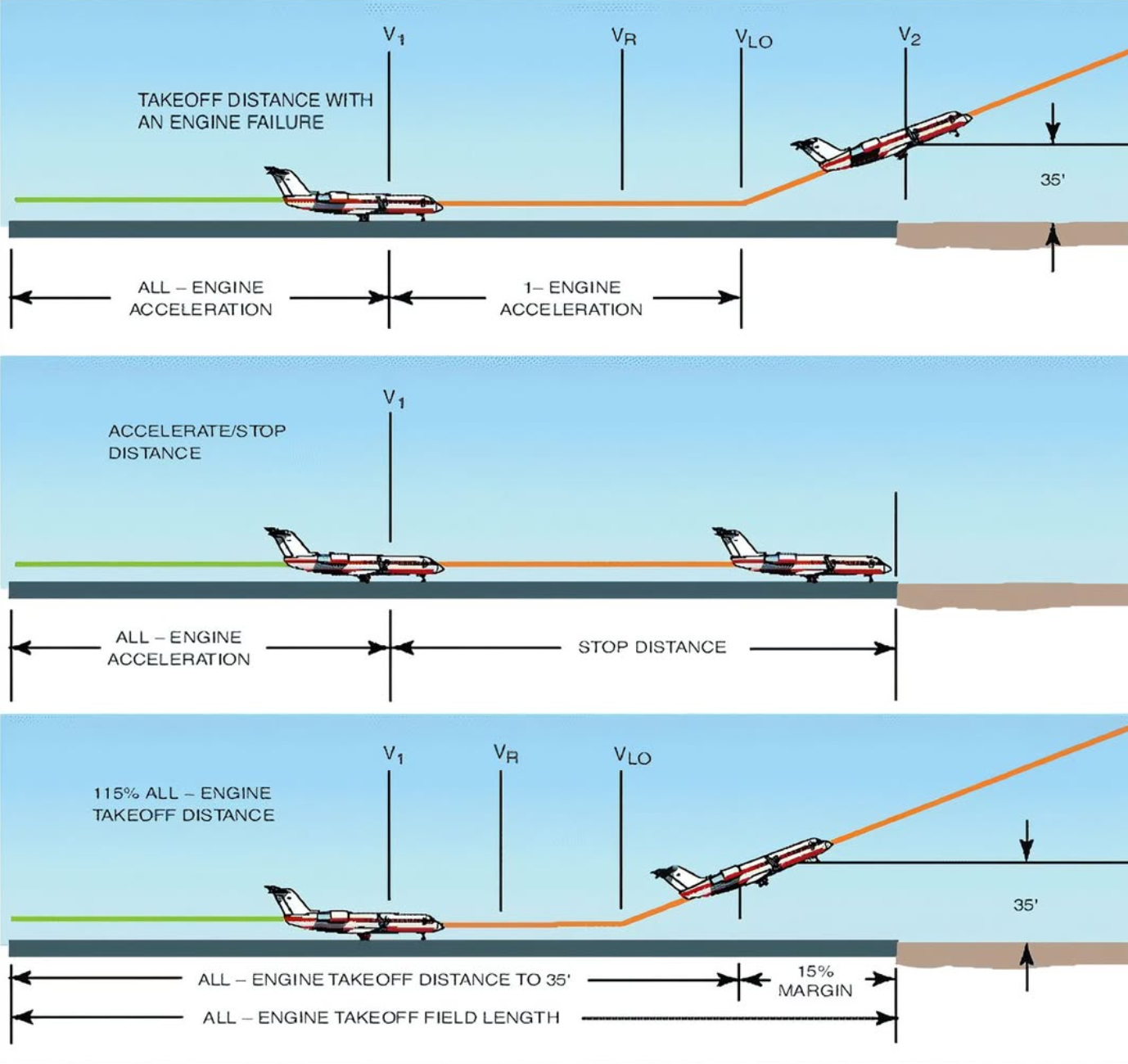Takeoff Distance
Jump to navigation
Jump to search

In aviation, a takeoff distance refers to the total length of runway required for an aircraft to accelerate from a standstill, lift off, and clear a standardized obstacle (usually 50 feet high). It’s a critical factor in flight planning and airport design, ensuring safety and performance margins.
Components of Takeoff Distance
- Ground Roll
- The distance the aircraft rolls on the runway before liftoff.
- Transition Distance
- The distance needed to transition from runway departure to initial climb.
- Obstacle Clearance
- The final portion needed to clear a 50-foot obstacle after takeoff.
Influencing Factors
- Aircraft Weight
- Heavier aircraft require longer takeoff distances. [Source]
- Density Altitude
- Higher altitude and temperature reduce performance, increasing takeoff distance. [Source]
- Runway Surface and Condition
- Wet, icy, or grass surfaces increase rolling resistance. [Source]
- Wind Conditions
- Headwinds shorten takeoff distance, while tailwinds lengthen it. [Source]
Declared Distances
- TORA (Takeoff Run Available)
- Length of runway available for the ground run only.
- TODA (Takeoff Distance Available)
- TORA plus clearway (unobstructed area beyond the runway).
- ASDA (Accelerate-Stop Distance Available)
- TORA plus stopway (used in case of rejected takeoff).
- LDA (Landing Distance Available)
- Not directly related to takeoff, but useful for shared bidirectional runways.
Performance Calculations
Takeoff distance is calculated using aircraft-specific charts in the Pilot’s Operating Handbook (POH). These charts account for variables like weight, altitude, temperature, wind, and runway condition. Pilots must also use judgment to ensure safety and regulatory compliance. [Source]
